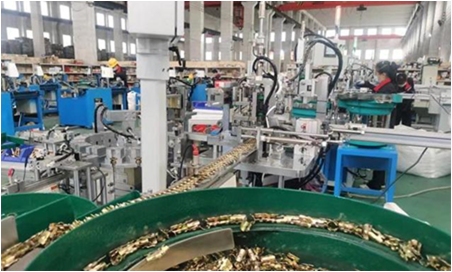сеп. . 21, 2024 17:26 Back to list
titanium threaded bar
The Rising Popularity of Titanium Threaded Bars in Construction and Manufacturing
In recent years, the construction and manufacturing industries have witnessed an increasing shift towards the use of advanced materials that offer superior strength, durability, and resistance to corrosion. Among these materials, titanium threaded bars have emerged as a popular choice, revolutionizing how structural components are designed and implemented. This article explores the properties, advantages, and applications of titanium threaded bars, shedding light on why they have become a material of choice for engineers and builders alike.
Properties of Titanium Threaded Bars
Titanium is a transition metal known for its remarkable strength-to-weight ratio. This means that titanium threaded bars can withstand significant loads while remaining lightweight, making them ideal for applications where weight reduction is essential. Furthermore, titanium exhibits excellent corrosion resistance, outperforming steel and many other metals when exposed to harsh environmental conditions, including moisture and chemicals. This inherent resistance to corrosion enhances the longevity of structures and reduces maintenance costs over time.
An additional notable property of titanium is its high fatigue strength. Structures often experience repeated loading and unloading cycles, leading to wear and failure in materials with lesser fatigue resistance. Titanium threaded bars can endure these cyclical stresses, making them suitable for high-performance applications.
Advantages of Titanium Threaded Bars
The advantages of using titanium threaded bars extend beyond their physical properties. One significant benefit is their ability to maintain integrity at elevated temperatures. Unlike traditional metals, titanium does not lose strength at high temperatures, making it a reliable option for industries such as aerospace and defense, where components are subjected to extreme conditions.
Moreover, titanium is biocompatible, which qualifies it for industrial applications in medical devices and implants. The use of titanium threaded bars in medical settings ensures that structures are safe for prolonged human contact, promoting healing and reducing the risk of adverse reactions.
titanium threaded bar

Another compelling advantage is their resistance to galvanic corrosion. When different metals come into contact within a conductive environment, a galvanic reaction can occur, leading to faster corrosion of one of the metals. Since titanium is impervious to this issue, threaded bars made from titanium can be safely used in conjunction with other materials without compromising their integrity.
Applications
Titanium threaded bars find diverse applications across multiple industries. In construction, they are used for reinforcing concrete structures, securing heavy machinery, and even in the fabrication of bridges and towers. Their lightweight nature makes transportation and installation more efficient.
In the aerospace sector, titanium threaded bars are employed in the assembly of aircraft components, where strength and weight savings are critical. Additionally, their high corrosion resistance makes them ideal for components exposed to various environmental challenges.
The automotive industry also benefits from titanium threaded bars, particularly in high-performance vehicles where reducing weight can lead to improved fuel efficiency and performance. As manufacturers seek to enhance the performance of their products, the demand for titanium components continues to rise.
Conclusion
In conclusion, titanium threaded bars represent a significant advancement in material science, offering numerous advantages that cater to the rigorous demands of modern industries. Their unique properties, including exceptional strength, corrosion resistance, and lightweight nature, make them an attractive option across various applications. As the construction and manufacturing sectors continue to evolve, the reliance on titanium threaded bars is expected to grow, paving the way for innovative designs and enhanced performance in countless projects. Embracing this shift is not just about adopting a new material; it's about building a stronger, more resilient future.
-
The Ubiquitous Reach of DIN934 in Application Realms
NewsMay.16,2025
-
Exploring Different Bolt Types
NewsMay.16,2025
-
Cracking the Code of Sleeve Anchor Mastery
NewsMay.16,2025
-
Clamp Design Principles,Types and Innovations
NewsMay.16,2025
-
Artistry Inspired by the Humble Anchor Bolt
NewsMay.16,2025
-
A Deep Dive into Screw Types
NewsMay.16,2025


